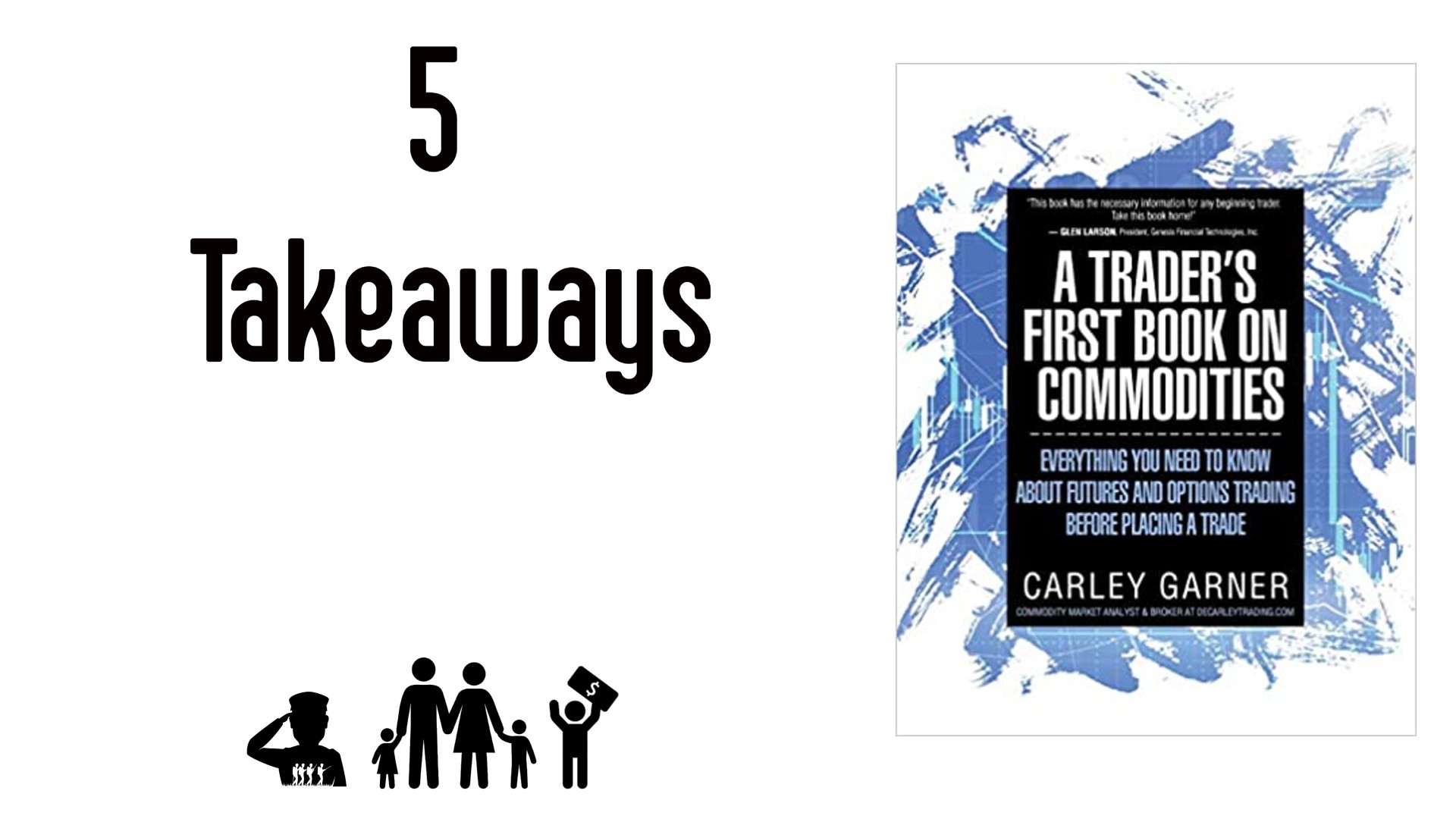My favorite author Robert Kiyosaki, of “Rich Dad Poor Dad” fame, describes four asset classes- real estate, business, paper assets (stocks, bonds), and commodities. I have already read multiple books in the other asset classes; you can read some of my thoughts in the article “20 Books that will Make You Rich.” However, “A Trader’s First Book on Commodities” by Carley Garner is my first foray into the world of commodities. I picked a great starting point.
I went into this book to learn a small amount of information about this brand new world. I learned much more than I thought that I could, mainly because it is over 400 pages. Yes, it will take you a while to complete. But the length works in its favor. You get a broad and detailed look at the world of commodities, from trading pits, electronic trading, brokers, brokerages, and more.
I was blown away by how different commodities are from stocks and bonds. The book talks about futures and futures options. There is a difference, and many brokerages do not allow options trading. It also explains some of the risks of dealing with put options because there is an unlimited potential loss. The author does an excellent job explaining all the fees and associated costs of becoming a futures trader- it can become costly to trade. Therefore, I will mainly watch from the sidelines, for now at least. With that, let’s get into my takeaways.
1) The history of futures trading gave me a good insight into why they are vital to the free market economy. Futures were used for farmers to hedge the success of their crops against disasters and storage constraints. Later, speculators got involved, and commodities trading became what it is today.
2) To close a position, you have to perform the opposite action you took to open a position. This means that you would have to buy a contract to close your position if you sold a future contact. Every trade is a “round” of a buy/sell or sell/buy.
3) When buying futures contacts, you do not have to take ownership of the underlying product. I am sure most people do not want 5,000 bushels of soybeans. However, if you don’t close your position in time, you could be asked to take possession of the product. The market exchange will give you a warning, but at a cost.
4) You do not need to own something to sell it- this is still the most challenging part for me to understand. You can sell a futures contract without owning or borrowing. With stocks, if you want to short, you have to borrow stocks to make a play. With futures, you can buy and sell products in advance. Farmers buy and sell futures to hedge their crops.
5) Trading is very expensive. Everything has a price in commodities- your broker, the data, the trading exchange, the spread between ask/bid, etc. It can easily cost over $1,000/month to trade commodities- before you even trade anything. This profession is not for cheapskates or the faint of heart.
I am thrilled I read this book on commodities. I always tend to follow Robert Kiyosaki’s lead. I now know enough to be able to read about commodities and understand something. I will slowly integrate my commodities knowledge into my stock readings. Following commodities can be a leading indicator for some stocks. The author recommends following Barchart.com to check in on commodities and options contracts. So, I will make this part of my weekly checks, along with SeekingAlpha (stocks), Allbusiness (Business), Biggerpockets (real estate), and Kiplinger (retirement). Overall, an excellent book for learning about the history and current state of commodities.
Read My Books for Free: Free Kindle Books Schedule
Check out our Merchandise Shop on Redbubble: (here)
Follow us on our Facebook Page (here)
Join our Facebook group (here)
Follow us on Pinterest at:
Disclosure: I am not a financial advisor or money manager, and any knowledge is given as guidance and not direct actionable investment advice. I am an Amazon Affiliate. Please research any investment vehicles that are being considered. I wrote this article myself, and it expresses my own opinions. I am not receiving compensation for it. I have no business relationship with any company whose stock is mentioned in this article.

Leave a Reply